The Viking warlord who changed Manx history
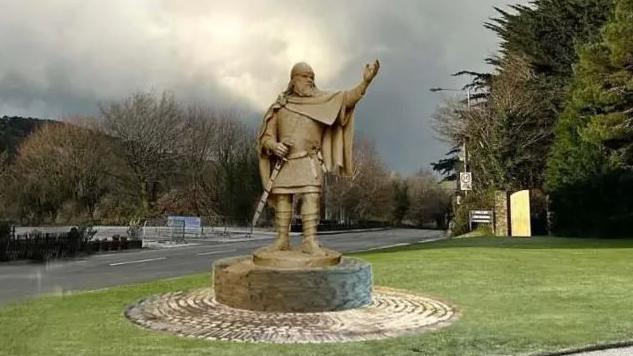
Supporters have said the statue symbolises the Viking roots of the Manx parliament
- Published
An 11th Century Viking warlord who fought and won a bloody battle is set to be immortalised in bronze at the historical political centre of the Isle of Man.
King Orry will be seen with his arm stretched out toward Tynwald Hill in recognition of the Norse origins of the Manx parliament.
The Viking ruler's status is such that children sing songs about him in the island's native tongue, he has been featured in place names, and words for the Milky Way in Manx Gaelic bear his name.
But King Orry may never have existed – or rather, he was actually known by another name, Godred Crovan.
Who was Godred Crovan?
According to Canadian history professor Andrew McDonald, who has researched the period featuring the Manx sea kings extensively, Godred Crovan was an "Irish-Norse warlord with connections to the ruling dynasty of Dublin".
Crovan survived the battle of Stamford Bridge in 1066, where he fought alongside Harold Hardrada's invasion force against English King Harold Godwinson.
He then turned his attention to the Isle of Man, which he saw as a strategic stronghold lying, as it does, in the heart of the Irish Sea and the centre of what are now the British Isles.
The Isle of Man, though, did not fall into his hands easily. It took three invasion attempts before he finally took control at the Battle of Sky Hill in 1079 and created the Kingdom of Man and the Isles.

Godred Crovan was featured on a set of stamps illustrated by Juan Moore to highlight the Manx sea kings
Prof McDonald, who also provided the text for a set of stamps featuring the Crovan dynasty of sea kings, said he "possessed a reputation as a formidable warrior", and briefly controlled Dublin before his death in 1095.
The dynasty he founded far outlasted his death, ruling Man and the Isles until 1266, when the Treaty of Perth passed the governance of the island to King Alexander III of Scotland.
That followed the death of King Magnus, the last of the Crovan dynasty, at Castle Rushen the previous year.
Why was the period significant?
Although hugely influential in shaping Manx history, Prof McDonald said the Crovan dynasty's time has been described as a "forgotten kingdom" that had "slipped between the cracks of historical writing" in a broader perspective of British and Scandinavian history.
However, he said the dynasty placed the Isle of Man in the middle of a "sort of miniature seaborne kingdom" for two centuries.
Such was their influence that their "huge" legacy can still be seen on the island.
They were responsible for the building of Peel Castle, Castle Rushen and Rushen Abbey and – not least of all - were the founders of the oldest continuous parliament in the world, Tynwald.
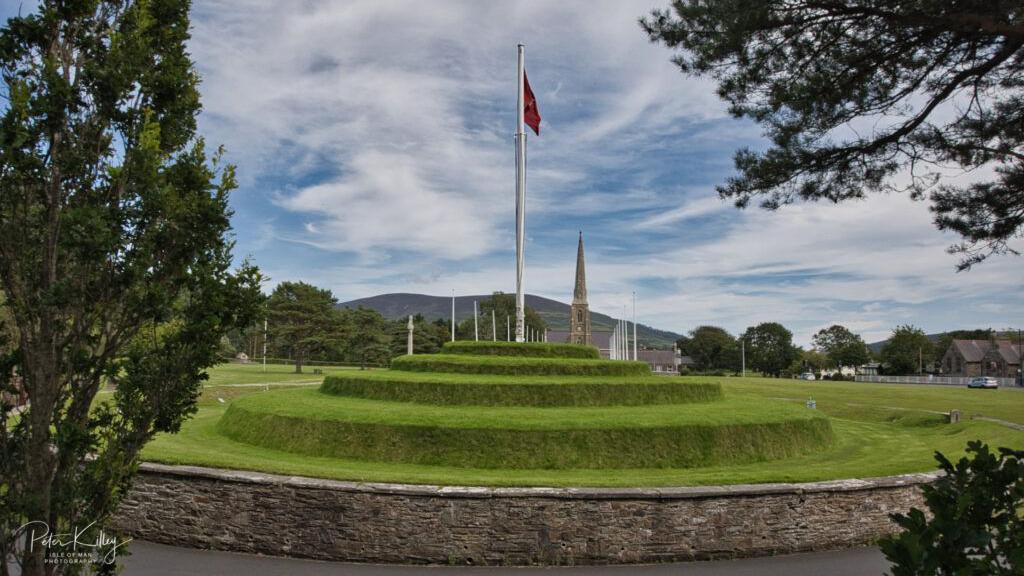
The statue will be positioned next to Tynwald Hill in St John's
What is Tynwald?
With its roots dating back 1,000 years, Tynwald sits in three forms – the House of Keys and the Legislative Council, which both consider the passage of new laws, and, when the two come together once a month to debate government policy and attempts by backbenchers to change it, the formal court of Tynwald.
Its buildings are now situated in the island's modern capital of Douglas, but members of the branches still come together in St John's in July each year for an annual open-air sitting on Tynwald Hill, the site of early Viking assemblies known as a thing.
A thing was an assembly made of up local people and a lawspeaker, who oversaw proceedings, and was where disputes were thrashed out.
It also is how Tynwald got its name – in Old Norse, the language of the Vikings, it meant the field of the thing.
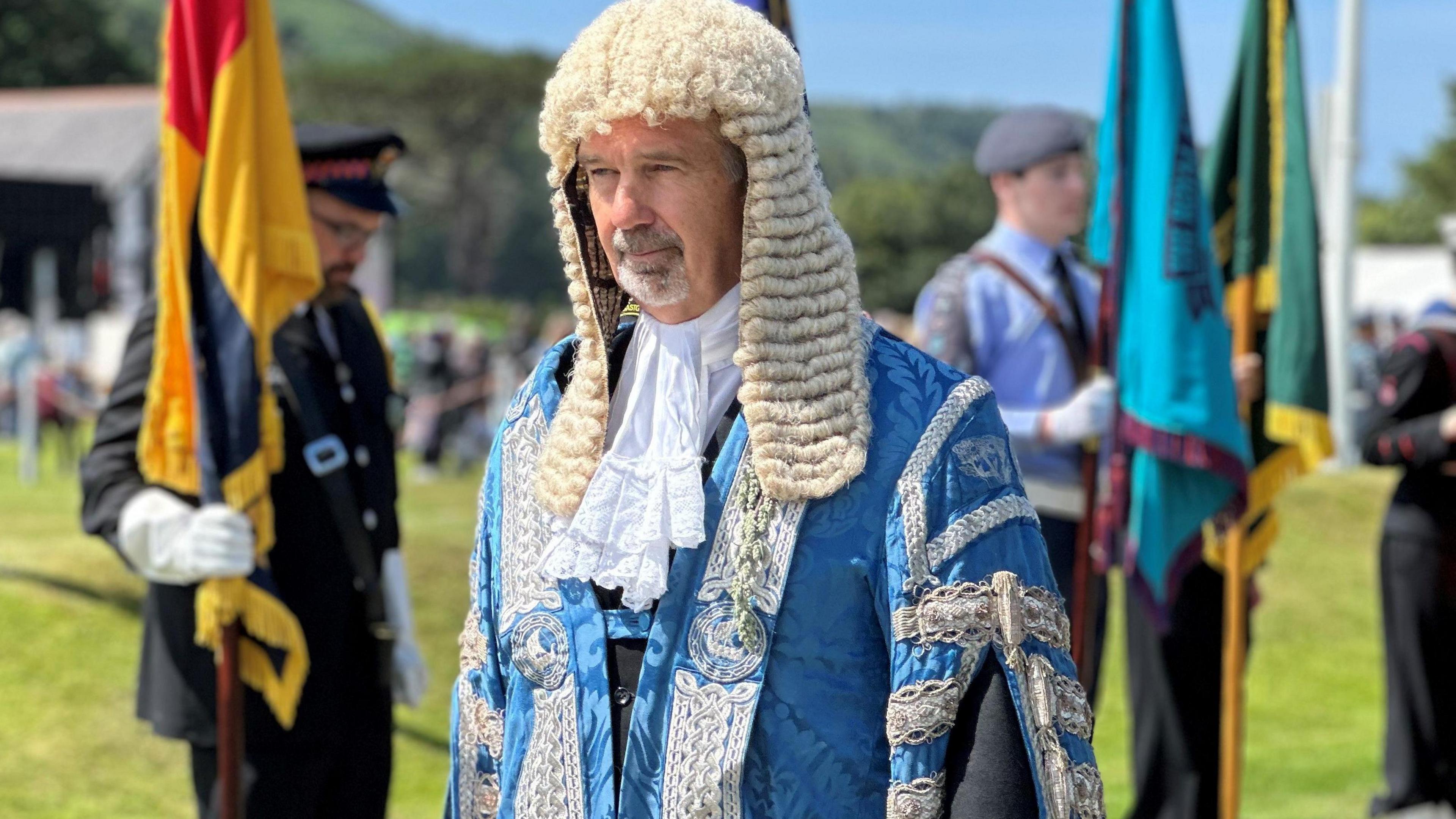
The statue has been backed by President of Tynwald Laurence Skelly
Now presided over by the lieutenant governor, who is the Lord of Man's official representative on the island, the Tynwald Hill ceremony still holds a significant place in the island's law-making process.
If a new law is not read out in Manx and English from the hill, in a part of proceedings known as the Promulgation of the Acts, it falls from the statute book.
Why next to Tynwald Hill?
The statue has been created on behalf of the President of Tynwald Laurence Skelly, with the support of the Tynwald Ceremony Arrangements Committee including the Speaker of the House of Keys and the chief minister.
The privately-funded 7.7ft (2.3m) tall statue has been designed by Manx sculptors Stephanie Quayle-Jackson and Darren Jackson.
In a supporting letter, Skelly said it was his "long-held belief" that promoting the origins of the island's heritage was "important in understanding our national identity".
The proposed site at Tynwald Hill was "highly appropriate" and would "act as a focal point of interest to help promote and educate both locals and visitors", he added.
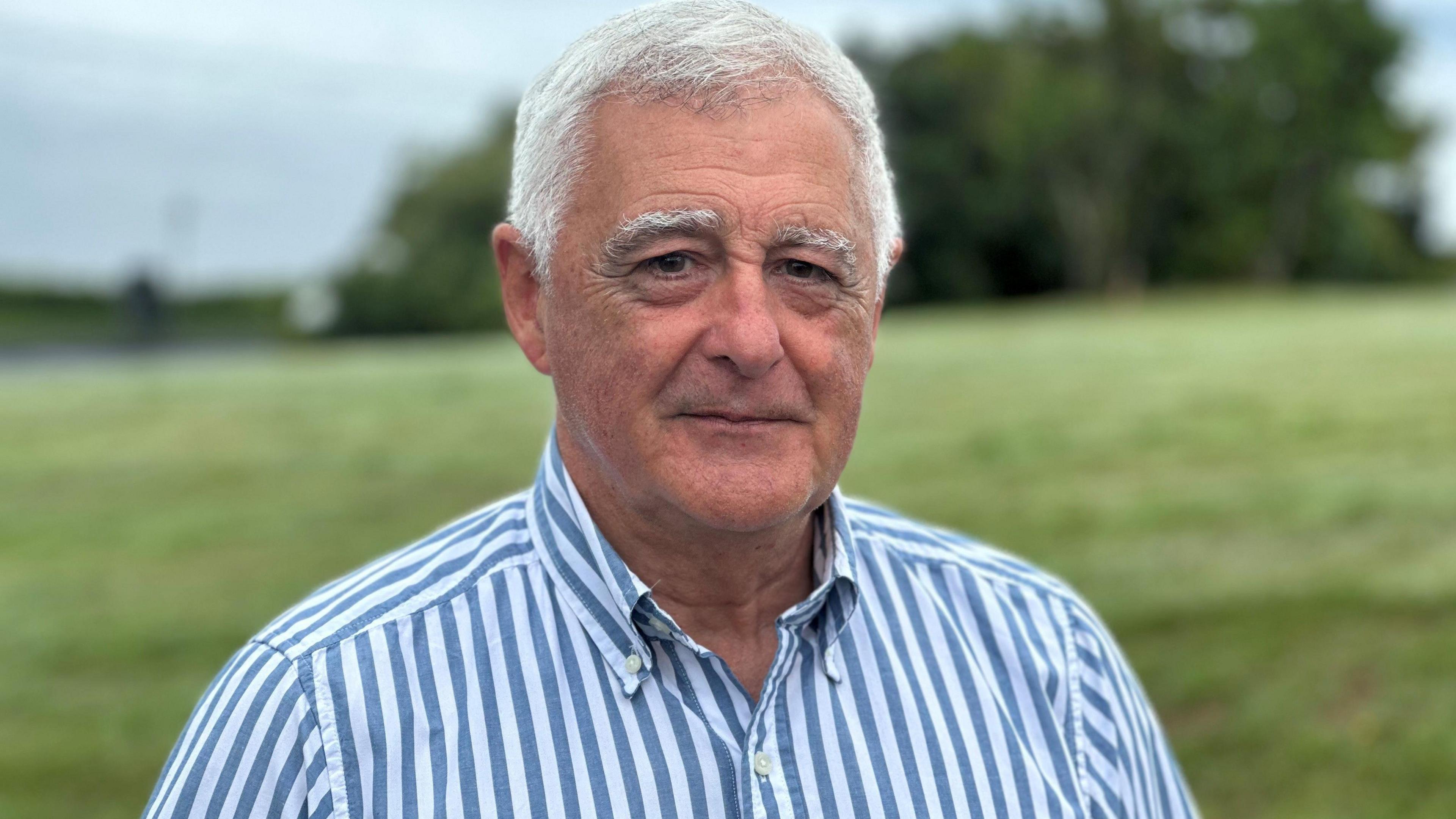
Charles Guard spoke in support of the statue when it was considered by the island's planning committee
And the location is something Manx historical researcher and filmmaker Charles Guard is a strong supporter of.
"I think it's clear that there's nothing overt at the site to tell you it's Viking.
"The idea of one statue at the side of a Viking will certainly remind people, or introduce people to the idea that this is part of our Viking heritage."
"All the items of clothing that this statue is depicted as wearing have been meticulously researched with archaeological and other evidence, so we do know those were the sort of clothes."
Were Godred and King Orry the same person?
The historical record of Godred Crovan and myths surrounding the figure King Orry have become interwoven over time, leading to an overlapping of folklore and fact.
Godred Crovan's inclusion in the medieval manuscript the Chronicles of the Kings of Man and the Isles – regarded as the most important documentation of early Manx history – cements his place firmly during the reign of the sea kings.
But the tales of King Orry's antics, often depicting him as a giant, are more fluid and fanciful in their nature.
One legend in particular that persists is the Manx name given to the Milky Way - Raad Mooar Ree Gorree, which translates as the Big Road of King Orry.
It is said that on arrival on Manx shores on the first occasion, the Viking warlord pointed to the galaxy when asked where he had come from.
Although there is dispute over whether the Gorree mentioned was in fact Godred Crovan, it is generally accepted that the sea king was popularly known as King Orry.
Mr Guard said he conceded there were "certain myths that have come down in legend" associated with the historical figure, but the tales remained "lovely stories that would be passed down".
Get in touch
Tell us which stories we should cover on the Isle of Man
Read more stories from the Isle of Man on the BBC, watch BBC North West Tonight on BBC iPlayer and follow BBC Isle of Man on Facebook, external and X, external.
Related topics
- Published29 July

- Published7 March
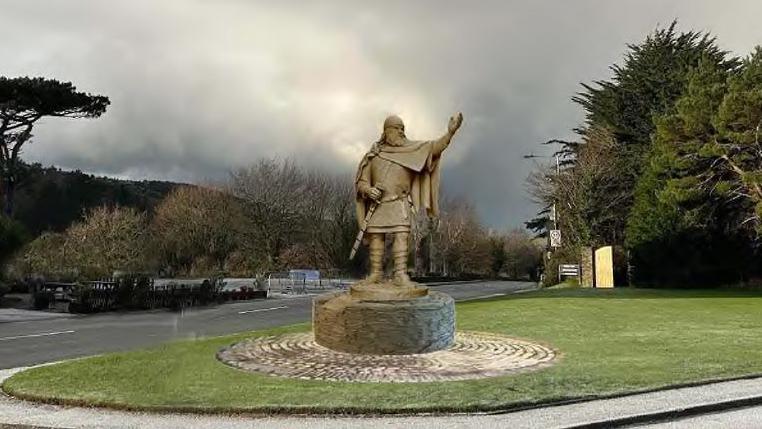
- Published27 April

- Published5 April
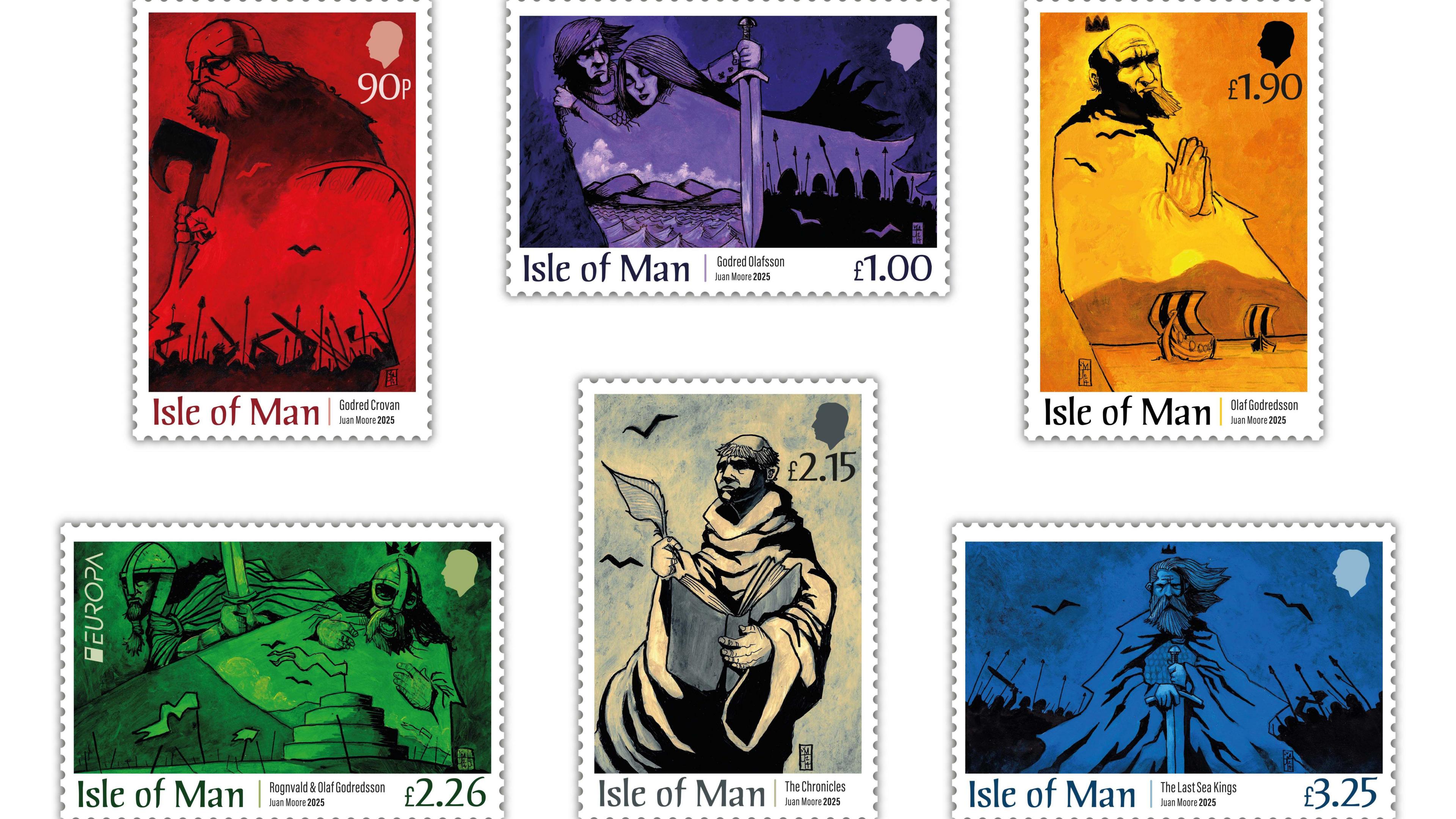
- Published23 August 2023
